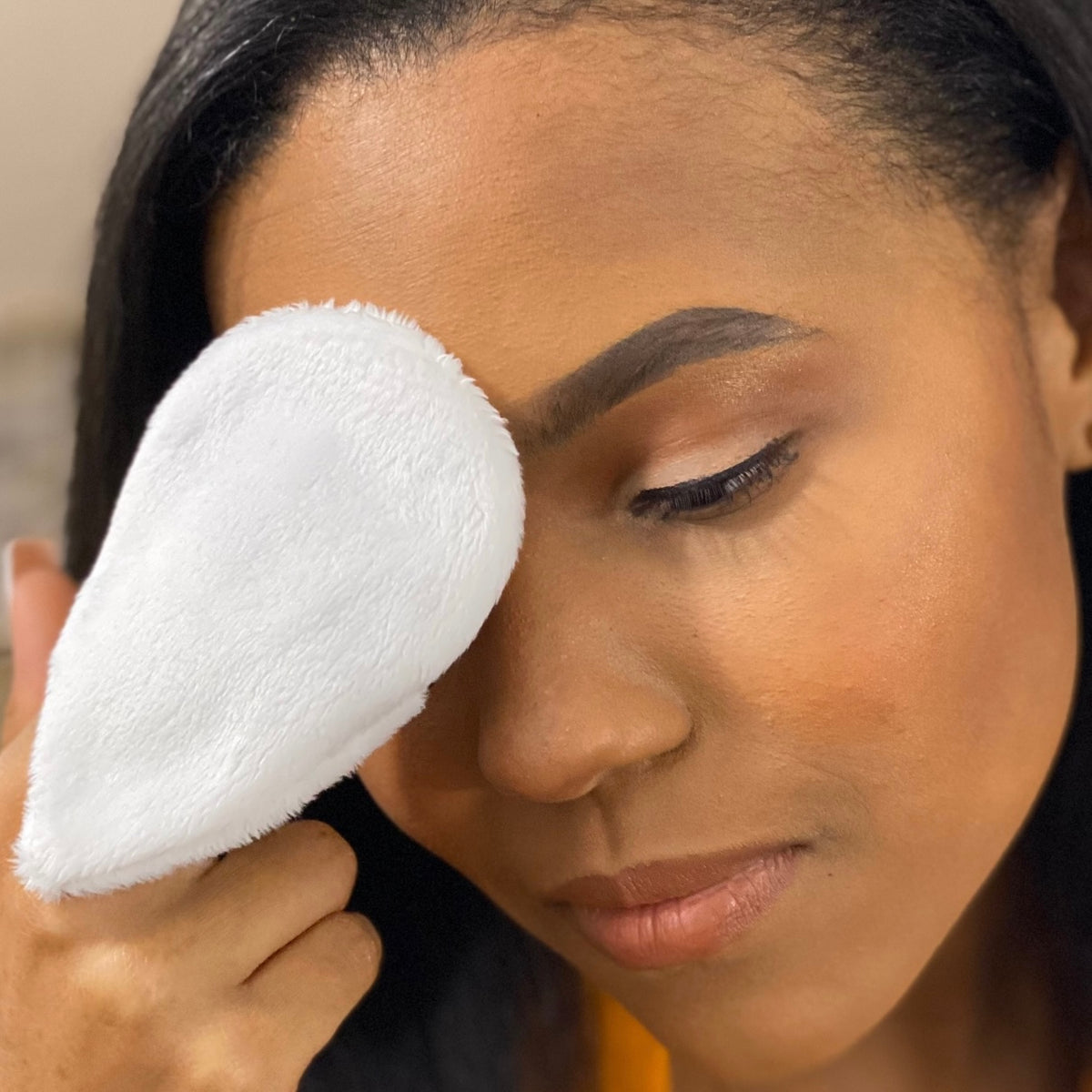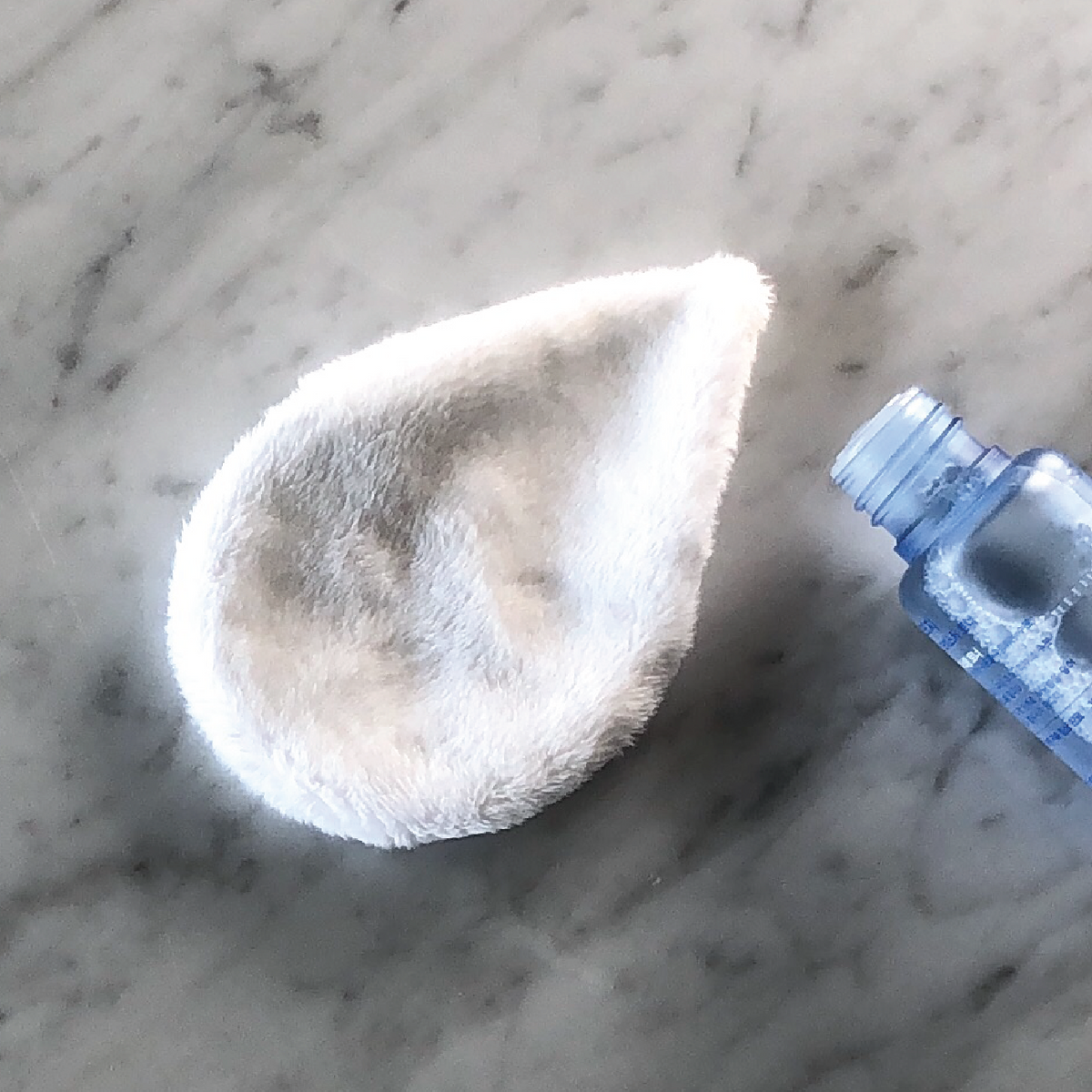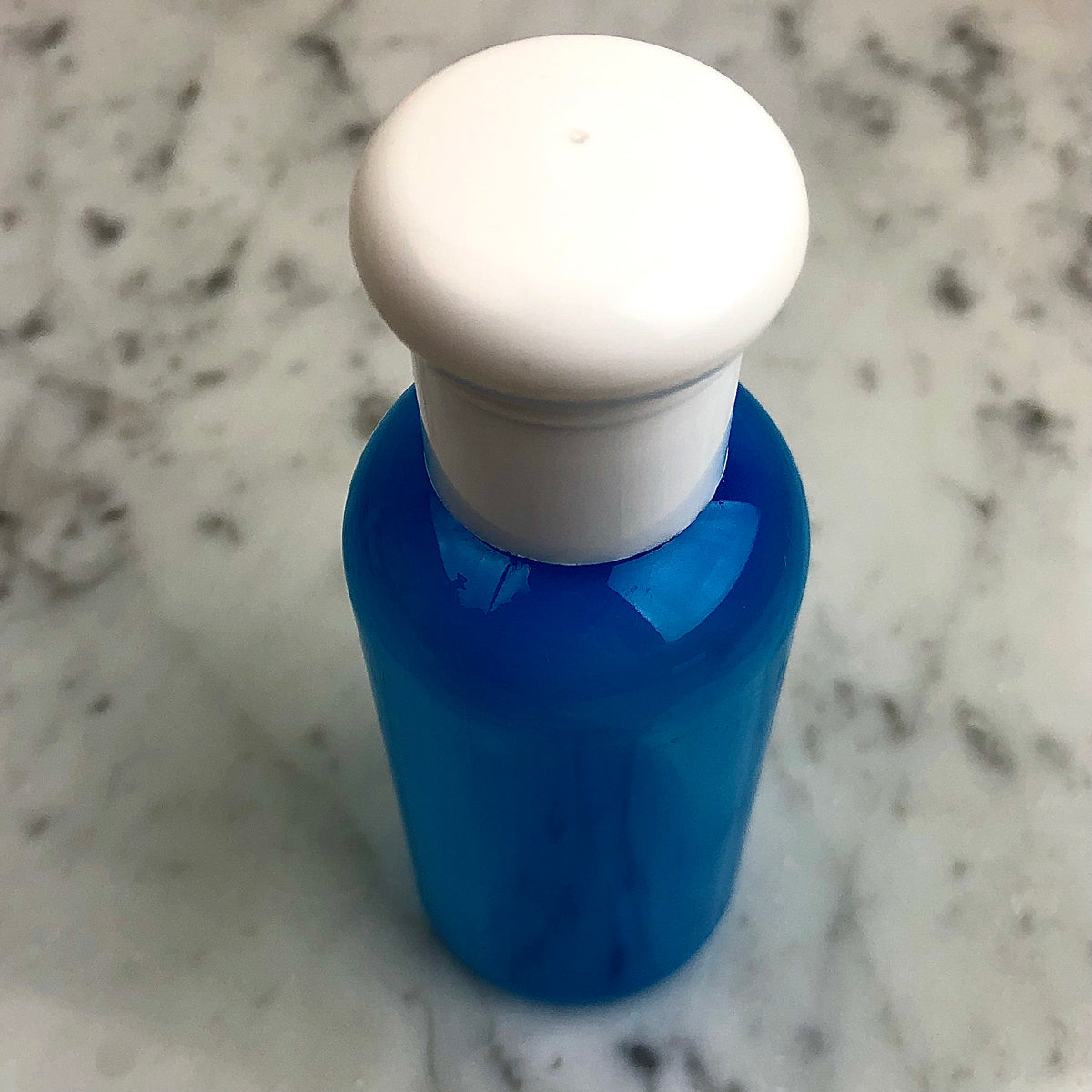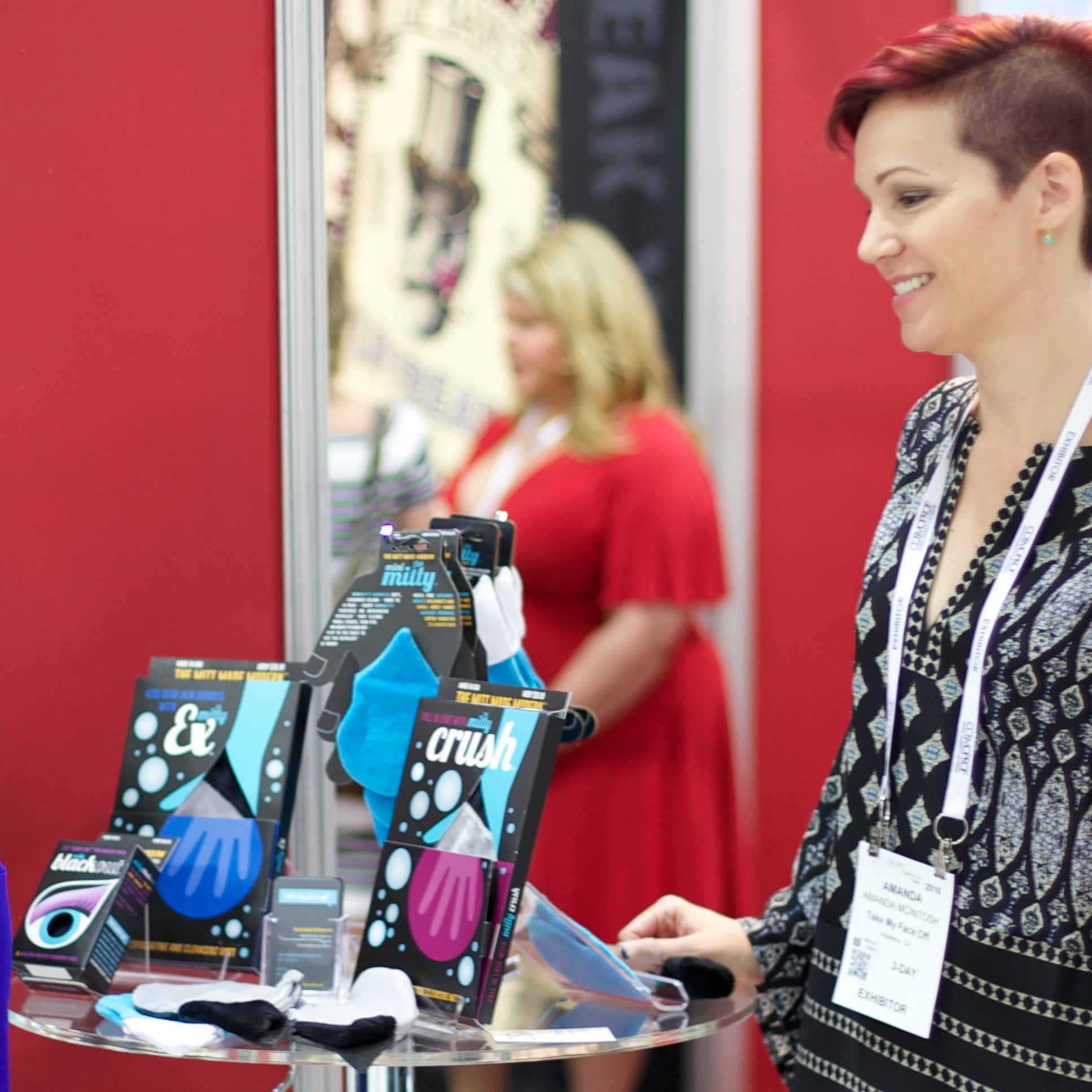Sephora and the Yellow Brick Road
In the early days of Mittys, my quest to reinvent the washcloth landed me in a lot of dead ends. Luckily, Sephora came along, waved a magic wand, and put me back on the Yellow Brick Road. To explain, I have to start at the beginning. Back then, Mittys were not yet confusing. And they were definitely not yet cute.
From Monsters…
I have several boxes of hilariously ugly prototypes that I call “the Mitty Museum.” I remember the looks of horror on friends’ faces when I asked them to test these earliest FrankenMittys. I was just trying to find a good fabric, so I wasn’t worried about how they looked. Some friends quit answering my calls for a while out of embarrassment. Others had stern talks with me about “branding” and aesthetics. “I know!” I would reply. “I’m just testing fabrics, and I can’t sew. I promise I won’t try and sell this to anyone!”
After I found my lovely plush fabric, I got working on the appearance. I had a hunch that there was no point in working out the pattern until I knew what fabric I was working with. I was right. A lot of possible shapes would not have been possible with the fabric I wound up choosing. And without the perfect soft, long-lasting fabric, I didn’t see a point to any of this.
…to Hexagons
It turned out that the sewing machine that worked best on my fabric (an industrial “overlock”) didn’t like to sew small curves. I wound up with this elongated hexagon that had an asymmetrical cuff at the wrist. All straight lines, no curves. It was almost cool-looking and it hid many a sewing mistake. Problem was, it took too long to sew and it didn’t fit very large or small hands.
Around this time, my brother gave me a fantastic piece of advice—“make sure that your product is so visually distinctive that if someone else walks into a friend’s bathroom and sees one, they’ll instantly recognize it as a Mitty.”
Long story short, this led me to my droplet shape and logo. It was a stroke of genius. The droplet is:
- Our logo
- Our purpose (water = cleansing)
- A message about resource conservation
- The product shape
- Related to the its tool-like function (we call the tip our “Detailer”)
…and back to Monsters
Remember, the reason I created a hexagon was that my sewing machines didn’t like curves. So I upped my pattern-making game. This led to some great ideas and some terrible ideas. Eventually, my large Mittys had slits for thumbs, sparkly fold-over elastic edging to reinforce the seams, and multiple fabric panels for different cleansing needs (they're ones laying on the table in the photo above).
The new, droplet-shaped Mittys were pretty, but there was one seam where five pieces of fabric had to come together, and I ruined three different serger sewing machines trying to handle it. I wound up locating a special-edition, dual-feed, five thread Japanese industrial sewing machine (no, not a Juki. You’ve never heard of this machine. Industrial shops haven’t even heard of this model). The instructions were in Japanese. None of the dials or parts had any indications. There are no videos about this machine on YouTube. Threading it could take two hours, but I usually gave up after one hour. It was a nightmare.
Yes, the Mitty I could make with that machine was kinda cool. Yes, that Mitty had a lot of great features. Yes, family and friends still ask for more of the “old” Mittys. But I couldn’t find anyone willing to sew it for me. I had to do them myself (I had gotten pretty good by this time). I would have had to charge people $150 each to make them worthwhile.
The Magic Wand
What did I do? I took a dramatic action and it worked out. I am an optimist and I am a person who works well under pressure. I had long had a dream of showing my product at the world’s largest beauty convention. So I reserved a booth, threw myself into designing my space, and put the monster on the back burner to stew on its own for a while.
I’m summarizing a lot for the sake of brevity. I DON’T recommend that anyone go to a convention before they have secured a manufacturer (did I mention I’ve made a lot of mistakes?). However, bold action can give results. And opening yourself up to a ton of input is transformational. I learned a million things in three days at the convention. I perfected my elevator pitch. I made connections. I saw how the industry REALLY worked.
And then, like the Good Witch of the West, a Sephora buyer waltzed into my “house.” She ignored my piles of signs, complicated brochures, and gorgeous props, walked up to my smallest item, and trilled, “This is all very nice, but what about THAT little guy?”*
She wasn’t talking about the Mitty I had slaved over. The one that ate sewing machines for breakfast. The one that had me tearing my hair out. She wanted to talk about something I had made on a whim, sewed by hand in the car, on the way home from my kids’ first trip to Legoland. Literally and metaphorically, it was made from scraps of leftover Mittys. She was talking about the Mitty Mini. I thought of it as a novelty piece.
The Moral of the Story
It was amazing that a retailer wanted my product. (If you know the beauty world, you might know that having Sephora as your first retailer partner is unheard of). But in retrospect, I’m more grateful for the validation and focus shift than for the business opportunity.
Sephora’s interest freed me from the monster’s grip overnight. I decided to quit worrying about the big Mitty and put all of my brainpower towards the simple, elegant product. And then when it was time to build on the launch of the little Mini, I used it as my template.
I freed my mind from the headache-inducing riddle of “must-make-fantastic-mitt-with-thumb-hole-that-magically-fits-all-hand-sizes.” Since the Mitty Mini was small and relatively simple, I was able to take the simplicity of the Mini and find a way to make it work in a larger size.
Instead of making a mitt that fit a whole hand, I made a mitt that fit just the fingers. The sizing solved itself—people could choose how many fingers to use based on their hand size! We didn’t need a thumb slit, no five-piece seams, no elastic edging. It was cheaper to make, sturdier, fit more people, and it was a more elegant product!
Now I know that the common wisdom is to launch with only one “hero” product and then grow from there. But if I had done that, I wouldn’t have made the Mitty Mini in the ride home from Legoland. And Sephora wouldn’t have noticed it amongst my bloated lineup at that trade show years ago. And I might have eventually gotten frustrated that not enough people liked my Mitty, and it was too expensive to make, anyway.**
I was “saved” from dead-end thinking by Sephora, who was such a major player that I HAD to take their opinion seriously. It was one of the greatest gifts I have ever received.
*I actually have no idea what she said. It was two women, and now that I know them, it’s highly unlikely either was wearing a poufy dress or a crown. And no magic wand. I was out grabbing coffee for the team when they came by, so I get to imagine this however I want.
**I eventually figured out how to create Mittys with the advantages of the old ones, without the drawbacks. More coming on that front soon!
Also in Company stories, skincare tips, and environmental news from Take My Face off

How to Help Teenagers with Skin Problems
- Avoid the temptation to go overboard! Harsh cleansers, astringents, and scrubs can make problems worse.
- Cleanse skin twice a day with a gentle cleanser. Make sure to rinse thoroughly.
- Avoid harsh soaps and creams (unless recommended by a dermatologist).
- If you want to try topical acne treatments, start off slowly.

What's the Difference Between Astringent and Toner?

Is Astringent Good for Skin?
It’s been a long time since astringents were the prom queens of the skincare world (that’s not the scientific term). What changed and why?
Skincare experts used to think that the way to manage oily, blemish-prone skin was to remove the oil and bacteria. Hence, they loved harsh, bacteria-killing astringents (among other products). But in the last few decades, those experts started changing their minds.


